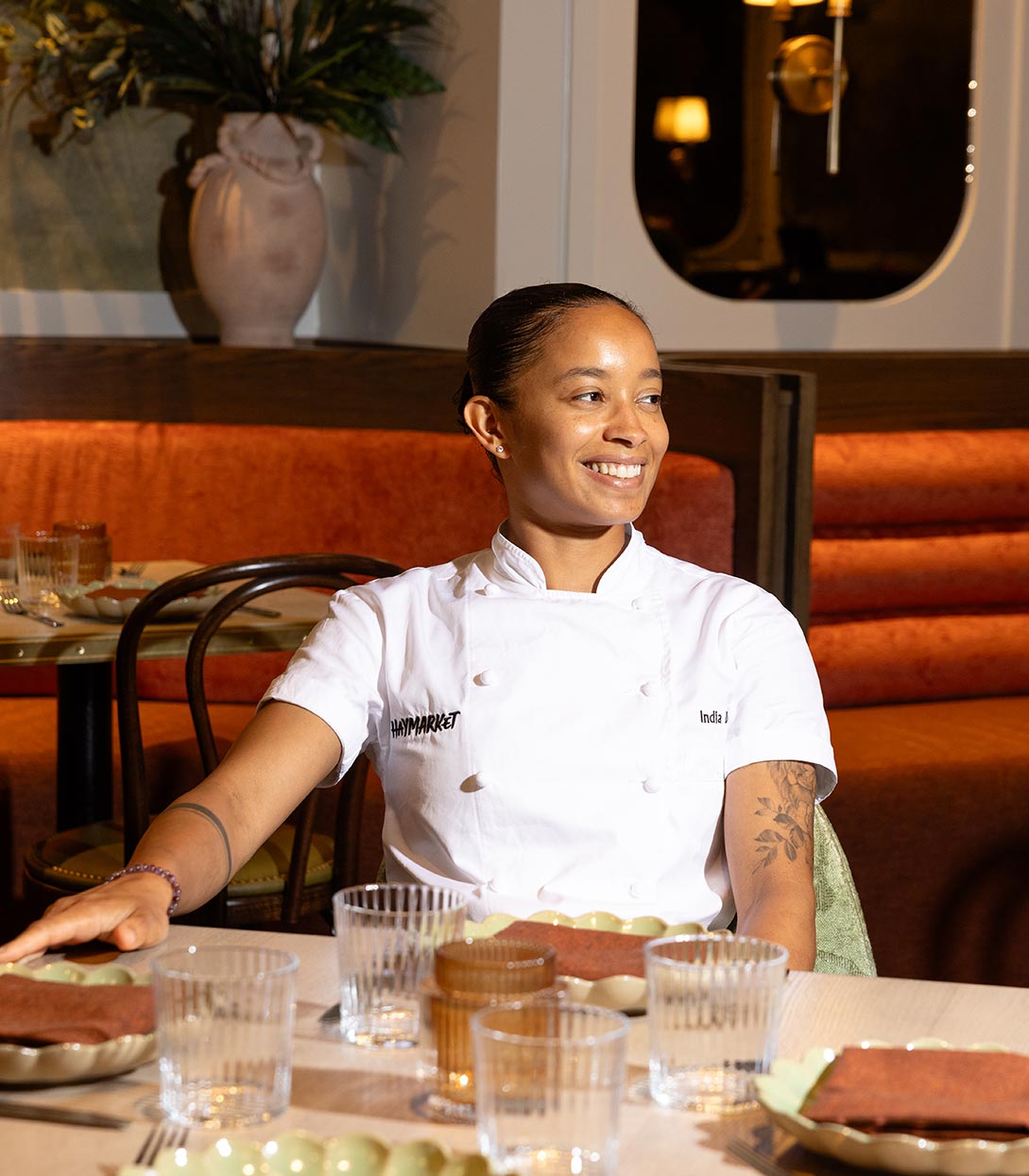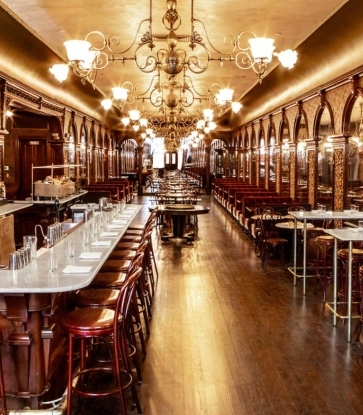Hotels are the vessels that encapsulate experiences, history and most prominently, bars, ranging in style from luxurious to secluded, that have become a mainstay in the hospitality landscape. It's with this sentiment that chef Greg Proechel of Ferris—a 38-seat restaurant in the basement of the MADE Hotel—speaks of the hotel restaurant and the life it takes on beyond just another guest amenity.
"I think hotels are now understanding that their restaurants can be exciting, inventive and still sustain visiting guests who want something simpler to satiate them," Proechel comments. "This gives us as cooks and chefs the freedom to not have to serve generic hotel fare and still be successful."

Within the confines of the intimately lit restaurant is a small, but fully functioning open kitchen that spotlights Proechel every shift. This proverbial stage is where Proechel performs each night—quite literally—as he's cooked every single service since the restaurant's opening in October of 2017.
"Here at Ferris, my goal is to put on a fun show for guests," says Proechel, who worked closely with MADE Hotel owner Sam Gelin and operator Charles Seich to facilitate this vision. "I not only inspect, but garnish every dish on the way out to the dining room. I like that control and enjoy how I can potentially meet or have a conversation with every guest that walks through the door." The restaurant was designed specifically to cater to this type of dining. Aesthetically, Ferris is enclosed with a combination of French and American white oak walls, supported by weathered spruce beams along the ceiling. Japanese hand-painted tiles and elm wood chairs surround a communal butcher's block table of maple wood down the center of the cozy dining room.

While Proechel observes guests from his position in the kitchen, guests can also witness the lively interaction and rhythm between him and his kitchen staff. Those at the eight-seat chef's table can eat first with their eyes—witnessing the chef season a piece of seafood before it hits the grill, garnish the carrot agnolotti with carrot tops, or carve a duck crown—before eating any dishes that were ordered.
While classified as seasonal New American, the restaurant's high-low approach is showcased in a menu inspired by Asian flavors that also nod to Proechel's personal eating habits and connections. For example, an ibérico katsu sandwich—a breaded and flash fried pork collar served on toasted white bread—is followed by charred broccolini with timur yogurt and cashews.

"I eat very late at night and mostly at places that are open are in Koreatown and Chinatown due to the hours we keep," Proechel explains. "Much of the techniques are learned through friends, mothers and girlfriends over the past five years." In addition, a particular love for Japanese ingredients and craftsmanship was garnered at Blanca, a two-Michelin-starred restaurant in Brooklyn where Proechel spent two years. It's things like these that filter through his vision to the plate and onto guest's palates.
As a product of its small design, Ferris lends itself not only to efficiency, but another buzzworthy term in the hospitality business: food waste. "We strive for zero waste and so far we've done a very good job at it," Proechel explains. This is displayed in the trim from the 60-day dry aged côte de boeuf (pictured at the top of the article) used in the dry-aged beef carpaccio, or the use of dehydrators to produce edible powders made from things like nearly expired produce or dried herbs. This mission spurs the creative process, which in turn inspires the kitchen's culture to eliminate waste even more, creating a feedback loop.

With what seems like no days off in the pipeline, Proechel is busy laying the foundation for what's to come at Ferris, which just celebrated its six-month anniversary. "In the near future, we see ourselves expanding the seating outside, developing a tasting menu at our counter, and a new menu for the lobby bar with a cook stationed upstairs who can simulate a similar, but different, experience as in the basement."
Proechel concludes that dining is much more than just sustenance, but an experience that he can be a big part of. "Keeping our guests coming back to see what's new is wonderful," he states. "But having them engage—visually, in conversation and all the way through their first sips and last bites—is truly what makes the experience that is Ferris."
Hero image courtesy of Ferris.





















